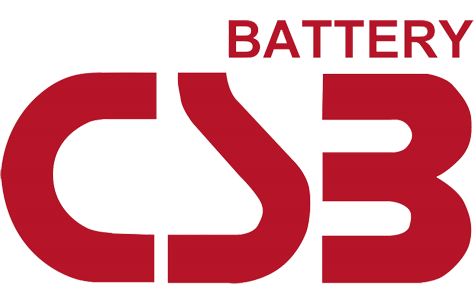Putting UPS For Emergency Lighting Under The Spotlight
Last year the government pledged £5m for capital investment projects and was wholly focused on building an ‘infrastructure revolution’. Despite grappling with a global pandemic and the resultant workforce and material supply shortages, the ‘build, build, build’ programme remains high on the UK agenda.
Already under immense pressure, the construction industry must overcome these challenges and great financial losses and continue to comply with more stringent regulations for industrial, residential, and commercial buildings. These legal requirements apply to life safety systems which include emergency lighting, sprinkler systems and evacuation lifts.
Legal Requirements for Emergency Lighting
Unfortunately, whilst so much attention has been given to developing new facilities, existing sites are being neglected. In many cases, these sites are failing to meet legal building regulations. All life safety systems must, by law, be supported by a continuous emergency power provision. For example, emergency lighting systems are required to have at least three hours of backup power. As stipulated in BS5266-1; in the event that the supply of mains power fails, emergency lighting must be available for an appropriate amount of time and as outlined in BS EN 50171, illuminated signs must have a guaranteed power supply.
This continuous backup power provision is often supplied via an Uninterruptible Power Supply (UPS) solution, which is also required to comply with BS EN 50171. In environments where a Central Power Supply System (CPSS) is installed alongside an emergency lighting UPS unit, this must adhere to international safety standard IEC/EN 62040.
Emergency lighting UPS solutions and those used for other life safety applications are designed exclusively to manage high inrush currents. Therefore, it is essential that UPS solutions used to support these critical systems are sourced from reputable providers that truly understand the critical challenges that life safety applications present.
Emergency Lighting and Additional Power Redundancy
One of the key aspects to be mindful of is the need for additional power redundancy. A redundant power supply supports the lighting load in case the main supply fails in public buildings. For emergency lighting to meet safety standards, there must be a dedicated battery for a backup power supply. If there is a complete mains power failure, emergency lighting must automatically switch on with no transfer time.
The primary issue for businesses to consider is battery life. For emergency lighting, batteries are the primary source of redundant power. Unfortunately, batteries have a significantly shorter lifespan than lighting components. Therefore, regular testing is critical to ensure that batteries can provide emergency lighting when necessary.
In accordance with BS EN 50172 / BS 5266-8, it is required to test all emergency lighting systems monthly. The test should last long enough to check all system components and ensure that all luminaires function correctly. In addition, the law requires that an annual inspection of emergency lighting takes place. The inspection involves cutting the power to the main light circuit for one hour. At the end of the test period, all emergency lighting and emergency exit signs should still be illuminated. However, the precise length of the the test depends on the type of system in various premises. In some cases, a duration of three hours is necessary. In large public buildings, a significant number of UPS batteries are necessary.
Therefore, a comprehensive UPS battery maintenance system is vital to ensure batteries last their intended lifespan. This is the best way to ensure that a UPS system for emergency lighting illumination in an emergency situation.
UPS Systems and BS 50171
Any uninterruptible power source solution used to support emergency lighting must comply with BS EN 50171. The regulations specify how long emergency lighting should be on, how bright it is, and that the inverter must handle 120 per cent of the load requirement for the duration.
In addition, the UPS system for emergency lighting must also comply with BS EN 50091. The requirement for this standard includes the following:
- • Battery requirement: Batteries must have a lifespan of at least ten years. For smaller units less than 1,500 watts, the lifespan is five years. At the end of life, the batteries should be able to operate at least 90 per cent of the nominal voltage. Additionally, there must be protection against direct and indirect current.
- • Battery charger: The battery must operate at least 80 percent of capacity after charging for 12 hours at 20°C. Also, the charger must withstand damage in the case of an output short circuit.
- • Inverters: If a short on the circuit occurs, inverters must be able to clear distribution fuses.
- • System monitors: The UPS must have sensors that display status regarding critical power supplies such as battery charging, battery supply and discharge status. Additionally, temperature sensors for batteries are crucial to ensure the battery charger can charge at the required voltage
Emergency Lighting Products — Static Inverter
Another vital element to any emergency lighting application is choosing the correct static inverter. Inverters provide standby or continuous source of AC power from a DC supply. Typically, standard UPS systems don’t have to meet EN 50171 regulations, so a compliant inverter is vital.
There are three main types of static inverter emergency lighting systems typically used in case of an electrical supply failure.
Passive Standby Static Inverter
In the event of a power outage, the load is automatically transferred to the inverter. The UPS battery then supports the lighting load. In most cases, a passive standby inverter is cost-effective because it is idle until required, needs less maintenance and has a long lifespan.
Active Standby Static Inverter
This type of static inverter runs constantly but in an off-load mode. The benefits of this are that it reduces stress on UPS systems, and there is less risk of failure when it takes the lighting load during a power outage.
No-Break Static Inverter
Like the active standby static inverter, the system is always on. However, the inverter continuously supplies the lighting load. Therefore, there is no change-over in the event of a mains supply outage, and the lighting load is unaffected. In addition, mains power surges don’t affect regular lighting, resulting in extended lamp life.
As one of the largest brand diagnostic providers of power protection equipment, Secure Power has access to an extensive range of authorised UPS solutions. From line interactive, online double conversion, single phase, three phase and modular, Secure Power’s product portfolio includes award-winning UPS systems from Riello, Schneider, APC, Eaton, Socomec and Vertiv. Supporting these emergency power solutions, Secure Power has its own nationwide team of technical engineers. Available 24/7, Secure Power offers immediate response and ongoing UPS maintenance and services, including UPS installation, commissioning and UPS battery works.
For more information about Secure Power’s extensive range of UPS systems and power protection services, please get in touch with the team 0800-080-3118.














